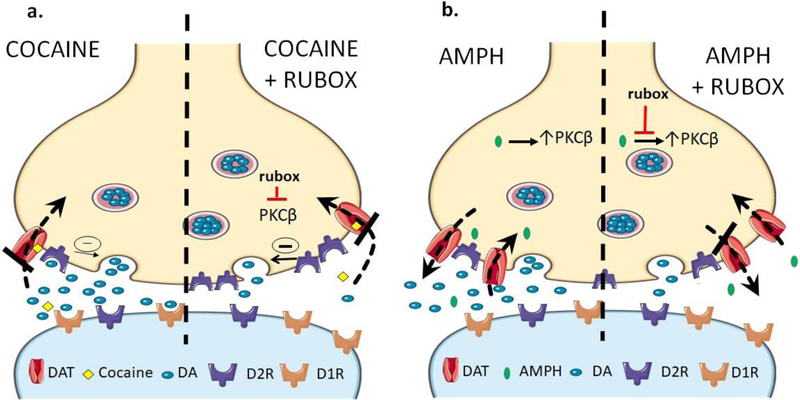Figure 6: Ruboxistaurin inhibits dopamine overflow elicited by amphetamine (AMPH) and cocaine by two different mechanisms. a. (Cocaine, left side).
Cocaine increases extracellular dopamine by blocking the dopamine transporter64. Because cocaine blocks the reuptake of dopamine at the dopamine transporter that has been released by exocytosis, its effect will be regulated by D2-like autoreceptor activity. PKC activation normally inhibits dopamine autoreceptor activity by reducing surface expression of D2 receptors which will contribute to the concentration of extracellular dopamine24–25, 65. a. (Cocaine + rubox, right side) Ruboxistaurin inhibits PKCβ, increasing the surface expression of D2 autoreceptors by blocking their internalization thus enhancing their effectiveness in inhibiting exocytosis of dopamine. This leads to a reduction in extracellular dopamine (dopamine overflow). b. (AMPH, left side) The mechanism of amphetamine action is dependent on the dopamine transporter. Amphetamine is a substrate for the dopamine transporter and will elicit dopamine efflux through reversal of the transporter66. Amphetamine activity does not depend on dopamine exocytosis and is not significantly regulated by dopamine autoreceptors41–42. Amphetamine that is taken up through the transporter activates PKCβ6–7 which potentiates reversal of the transporter and dopamine efflux5, 9. b. (AMPH + Rubox, right side) Blockade of PKCβ reduces the outward transport of dopamine but does not affect inward transport2–4, 10–11, 54–55. The end result of ruboxistaurin action on activation by either cocaine or amphetamine is a reduction in extracellular dopamine (or norepinephrine) and a reduction in stimulant-induced locomotor activity.

